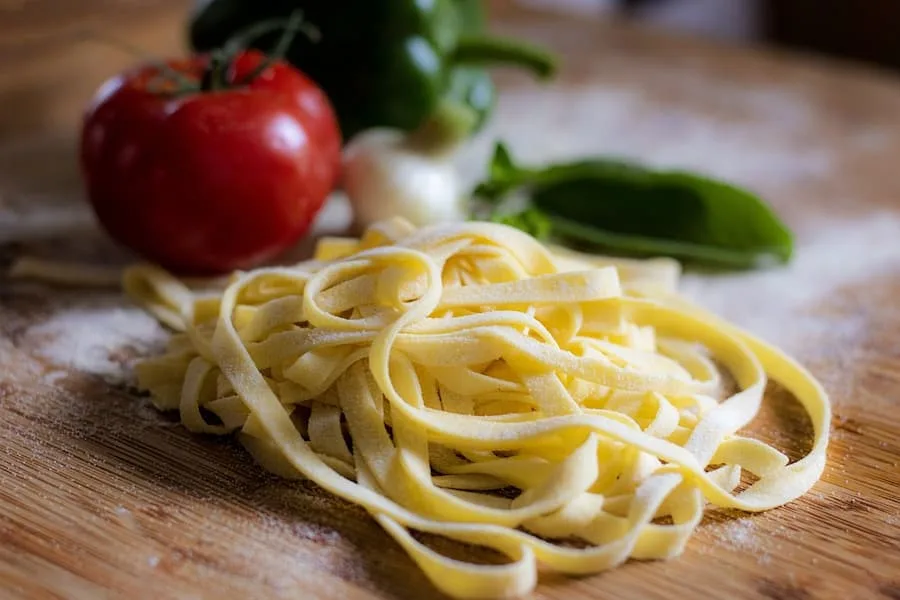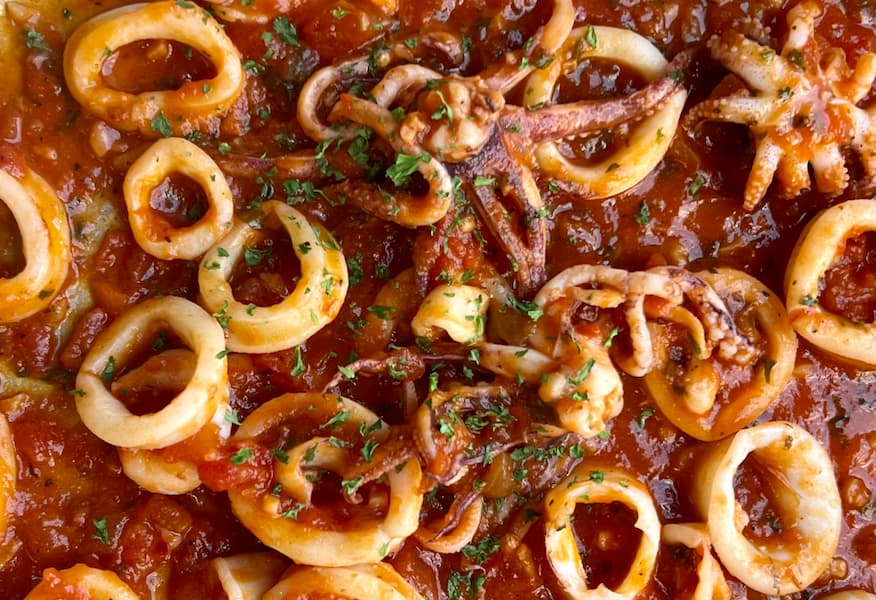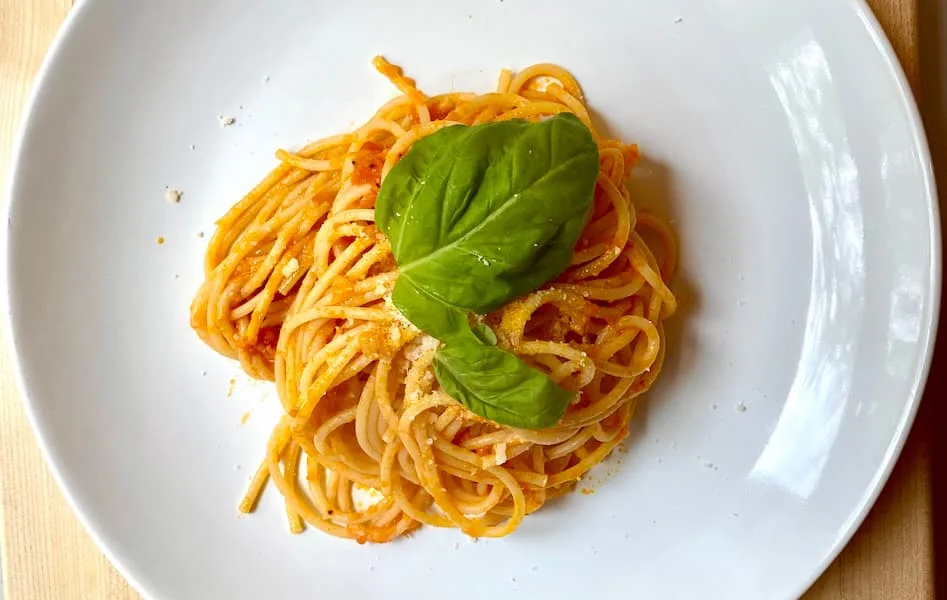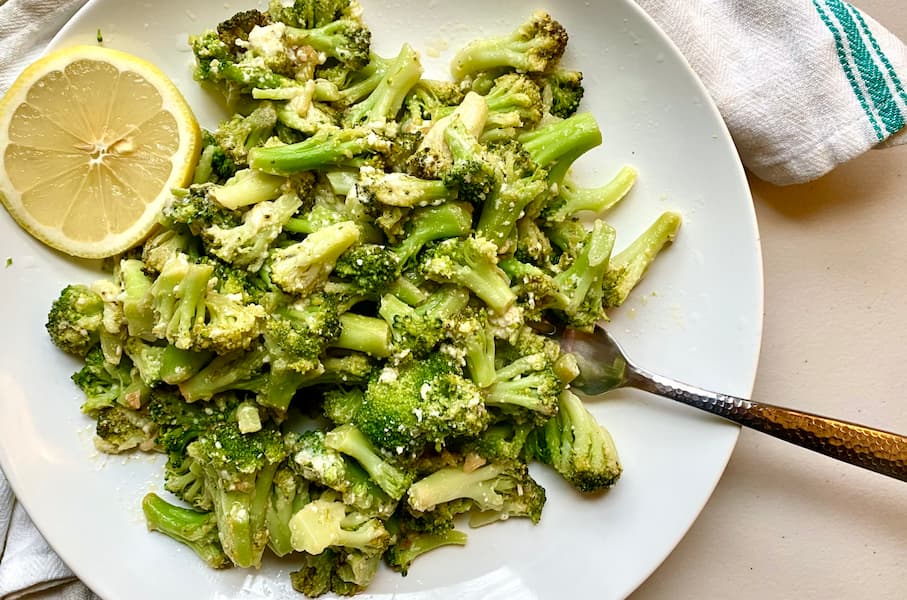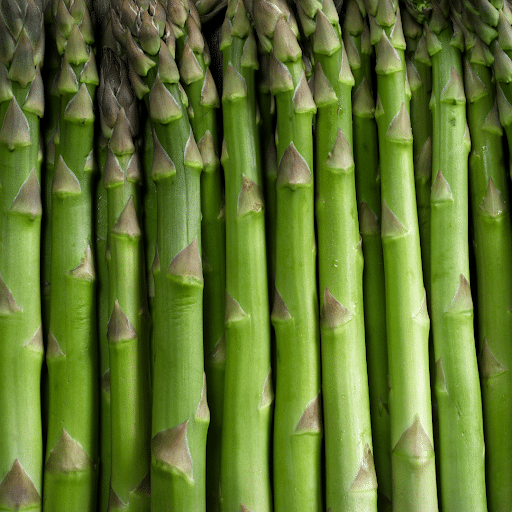Making fresh pasta is a fun and delicious activity, but how do you store it when you’ve finished? You don’t want your work to go to waste, so here’s what you need to do.
I’ve read a lot of other posts about how to store fresh pasta before writing my own. I do it every time that I’m writing something new, even if it’s on a subject that I know. Some of the longest ones were like “storing pasta is much trickier than you think” and… come on.
Don’t get me wrong, I’m obsessed with food safety. If you’ve read some of my other posts on the subject, you already know that I always cite medical sources and advice for caution. But handling fresh homemade pasta in a safe way is not rocket science. You just need to know a few things, and that’s why I’m here.
Let’s start.
Fresh pasta vs dry pasta
We have discussed the different types of pasta in a more comprehensive post before, but I’ll make a recap here.
Although they can look similar, fresh and dry pasta can have some key differences.
Dried pasta is typically made with water and semolina flour. The drying process gives it a hard texture and a long-term shelf life, which makes it a very common pantry staple. It is often cooked “al dente”, meaning that it maintains a little bite instead of being completely softened. Examples of dry pasta are penne, spaghetti, and macaroni.
Fresh pasta is technically any type of pasta that doesn’t undergo a drying process. However, the term is also often used to refer to egg pasta which is made with water, flour, and well… eggs. Surprise. Sometimes it contains olive oil as well.
Most of the pasta that is sold while still fresh fits into this category, and that’s probably the reason why the two terms are often used interchangeably. However, when explaining the storing methods below, I’ll separate between eggless and egg pasta.
The egg addition and the higher moisture content give fresh pasta a bolder flavor and a softer texture. For this, it cooks faster than dry pasta. It is impossible to make it really “al dente” because it is already too soft before being tossed in the boiling water. Examples of fresh egg pasta are lasagna noodles, ravioli, and tagliatelle.
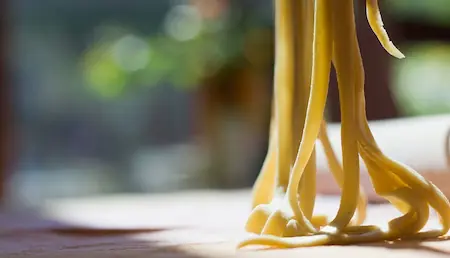
Storing dry pasta is very easy. If you buy it at the grocery store, you can keep it in a cool, dry, and dark place for years. Just close the package well and keep the place clean to avoid bugs, and you’ll be fine.
If you make it at home, it can usually last up to 3 months in the same way. The only thing I would advise is to be careful when drying it. Make sure all the moisture is gone, or it will deteriorate.
Fresh pasta, on the other hand, has a much shorter shelf life, and there are a few more things you need to know.
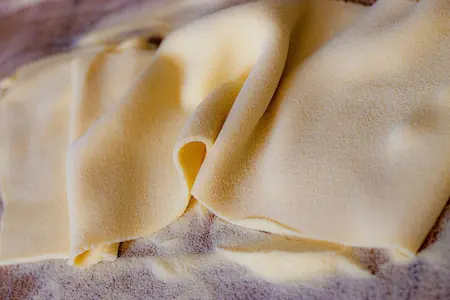
Good practices to prevent contamination
This is not directly related to storing fresh pasta, but preventing contamination is always the first step for safety.
The first thing to do is to make sure that the working surface on which you’re making the pasta dough is clean and dry. You don’t want your pasta to absorb anything bad. The same applies to the other tools you’ll be using, including your own hands.
Also, remember that the eggs in fresh pasta can be a source of salmonella. For this reason, you should avoid tasting it before cooking, and use only the freshest eggs. If you’re unsure, a simple trick is to put them in a small bowl full of water. If they sink, they’re fresh. If they remain in a vertical position, they are getting old but can still be used for other recipes. And if they float, they’ve gone bad.
You don’t need to pasteurize the eggs, but make sure to clean everything afterward. If you’re using a pasta machine, avoid cleaning it with water, as it can cause rust, and follow the instructions given by the manufacturer.
Finally, when you finish your homemade fresh pasta, don’t waste too much time. Either cook it or store it in the following ways for when you need it.
Best ways for storing fresh pasta
There are three methods to store fresh pasta for future use: drying, freezing, and refrigerating.
Drying
Removing all the moisture allows the pasta to last much longer than usual, even when it contains eggs.
Traditionally, eggless pasta was dried by hanging it in a dry area for 12 to 24 hours. However, this is not the safest option for fresh egg pasta, which shouldn’t be kept at room temperature for more than 2 hours. It is also not the best way in general, as it depends a lot on the environmental conditions of the kitchen. If you do it on a humid day, for instance, it might not work well.
Modern methods to dry homemade pasta involve:
- sprinkling the pasta with flour, arranging it in a single layer on a large baking sheet covered with parchment paper, and letting it dry in the oven in cold air-ventilated mode;
- using a food dehydrator set at 104°F for 12 to 24 hours.
To know when it’s ready, try bending it. It should snap immediately.
Commercially dried pastas can last for years. Homemade dried pasta, on the other hand, should be consumed within 3 months if it’s eggless, or 20 days if it contains eggs.
In all fairness, I never use this method. It is great for industrial production, but when I make fresh pasta at home, I want it to actually be fresh so that I can enjoy all its flavors. Also, drying doesn’t work if you’re making stuffed pasta like ravioli, which contain easily degradable ingredients in their filling.

Freezing
Freezing fresh pasta requires much less time than drying. Again, take a baking sheet and arrange the individual pieces of pasta in a single layer. This way, each pasta sheet will freeze perfectly. Leave it in the freezer for 15 minutes, then move the pasta into a freezer bag. Press it well to remove as much air as possible, and seal.
With this method, you can store your fresh pasta for about a month. It’s great if you have a lot of store-bought pasta to handle, or if you have made too many fresh noodles.
If you’re making dishes with fresh pasta like lasagna for your next Sunday lunch, you can also just assemble them in a baking dish and keep them in the freezer as they are for a few days. Chuck ships frozen lasagna all across the States every day, and everyone loves it. It’s a great way to prepare big meals without spending the weekend in the kitchen, but make sure you freeze your dish well, or it could lose some of its flavor!
→ You may also like: Can You Cook Frozen Lasagna without Defrosting?
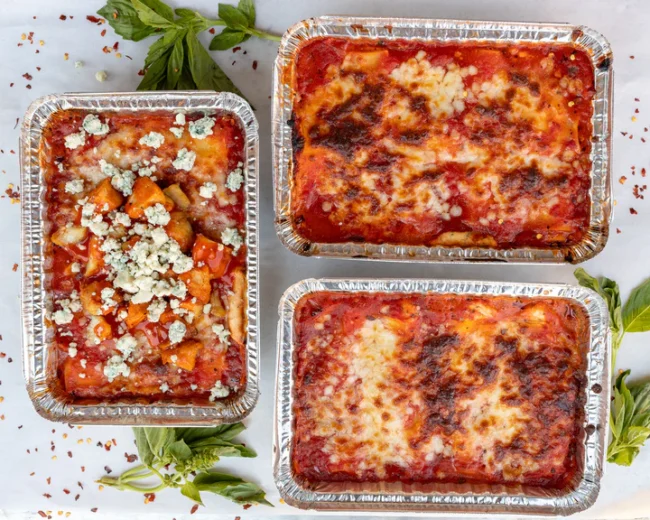
Refrigerating
This is, in my opinion, the simplest and best way to store homemade fresh pasta. It doesn’t make it last as much as the other methods, but unless I’m making lasagna like in the example above, I usually cook all my fresh pasta within the next 18 hours, so I’ve never had any problem.
Fresh egg pasta can last in the refrigerator for 2 to 3 days. But to be honest, I recommend eating it within 2 days. This way, it will keep most of its flavor. For best results, keep it in an airtight container or in a plastic bag.
How to make fresh pasta dough
If you want to make your own pasta, I have posted a pappardelle recipe that you can adapt to any other pasta shape. All you need is:
- all-purpose flour;
- water;
- eggs;
- a rolling pin;
- a clean working surface;
- some plastic wrap.
You can also use a stand mixer or a food processor that can knead the dough, but it’s not mandatory. Keep an extra 1/2 cup of flour near your working station, you’ll need it to prevent the dough from sticking to the board or to your hands.
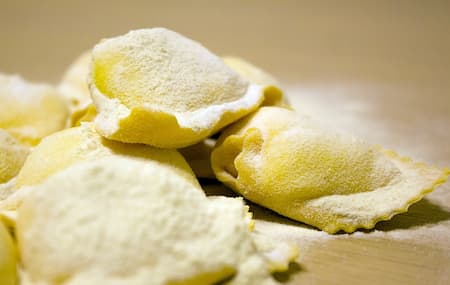
FAQs about storing fresh pasta
Can you freeze fresh pasta ravioli?
I don’t think it’s a good idea. You can freeze some types of stuffed pasta, but ravioli contains ricotta. And with its high moisture content, ricotta will inevitably lose its creamy texture when frozen. It can still be used for baked dishes, but the best way to store ravioli is to keep it in the refrigerator and consume it within 2 days.
Do I have to cook the pasta before freezing it?
No, you don’t need to. Just follow the procedure I’ve shown above and you’ll be fine.
Do I have to thaw frozen pasta before using it?
No. Thawing can actually impact its texture negatively. Just toss it into a pot of boiling salted water and cook it.
How long can I store homemade pasta?
Eggless pasta can be safely stored up to 3 months in any kind of container, as long as it is in a dry place. Possibly, it should be kept away from the light. Egg pasta, on the other hand, can last:
- up to 20 days if dried
- about 1 month if frozen
- up to 3 days in the refrigerator
Now you know everything you need to store your fresh pasta safely and without losing its delicious flavor. If you have any questions, let me know in the comments. Have fun making your own pasta!

